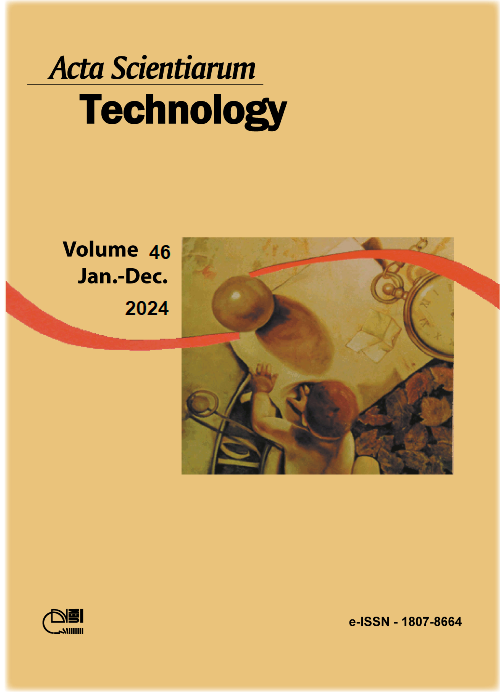Lifetime of forage cactus submitted to different water and saline levels
DOI:
https://doi.org/10.4025/actascitechnol.v46i1.67282Palavras-chave:
Survival; Nopalea cochenillifera; salinity.Resumo
Forage cactus is mostly grown in hot climates, where water deficit is quite common, consequently they end up suffering from saline stress, as the waters of these regions have high concentrations of salts. The buildup of salts in the soil promotes an unfavorable environment for the development of plants, as it negatively alters the growth of crops, reducing the productivity of forage plants in agricultural areas. The objective was then to evaluate the lifetime of Nopalea cochenillifera cactus under water and saline stress conditions. This research was conducted from September 2021, to August 2022, in the forage farming sector of the Federal Rural University of Pernambuco. The design used was completely randomized, in a factorial scheme, being composed of two clones of cactus (Clones Giant and Little Sweet), two levels of water irrigation (0.5 and 1L weekly), five levels of saline stress (0, 2, 4, 6 and 8 dS m-1), with four replications. The lifetime of forage cactus was evaluated using the statistical methodology of survival analysis by Kaplan-Meier method. The plant mortality rate of N. cochenillifera clone Giant Sweet at 257 days after planting was of 20%, while the clone Little Sweet showed a mortality rate of 15%. When irrigated with 0.5 liter of water, the plants of the clone Giant Sweet presented a mortality rate of 5.0%, whereas the clones Little Sweet showed no mortality. When using 1.0 liter of irrigation water, the clones Giant and Little Sweet showed a mortality rate of 35.0 and 30.0%, respectively.
Downloads
Downloads
Publicado
Como Citar
Edição
Seção
Licença
DECLARAÇíO DE ORIGINALIDADE E DIREITOS AUTORAIS
Declaro que o presente artigo é original, não tendo sido submetido í publicação em qualquer outro periódico nacional ou internacional, quer seja em parte ou em sua totalidade.
Os direitos autorais pertencem exclusivamente aos autores. Os direitos de licenciamento utilizados pelo periódico é a licença Creative Commons Attribution 4.0 (CC BY 4.0): são permitidos o compartilhamento (cópia e distribuição do material em qualqer meio ou formato) e adaptação (remix, transformação e criação de material a partir do conteúdo assim licenciado para quaisquer fins, inclusive comerciais.
Recomenda-se a leitura desse link para maiores informações sobre o tema: fornecimento de créditos e referências de forma correta, entre outros detalhes cruciais para uso adequado do material licenciado.



















